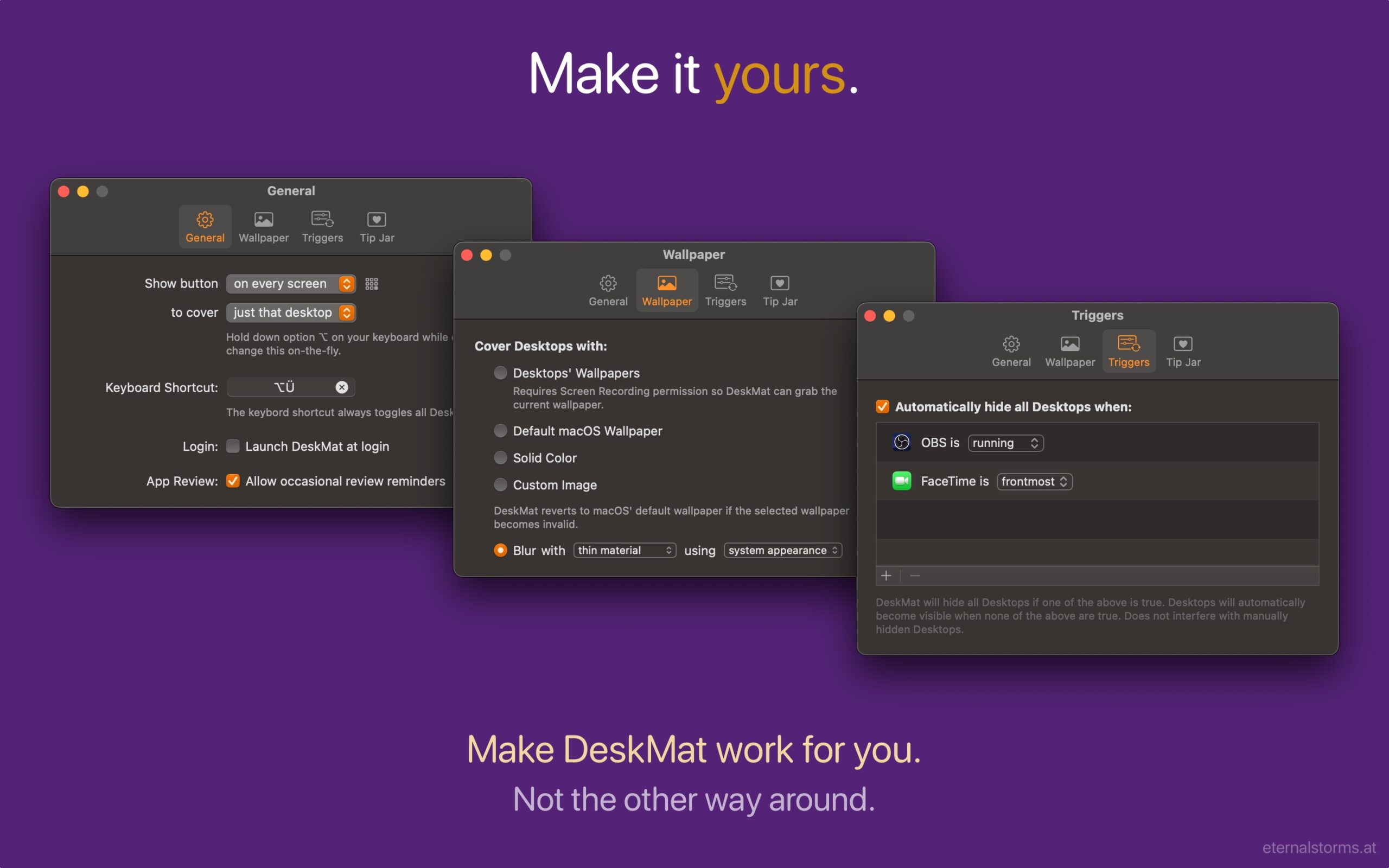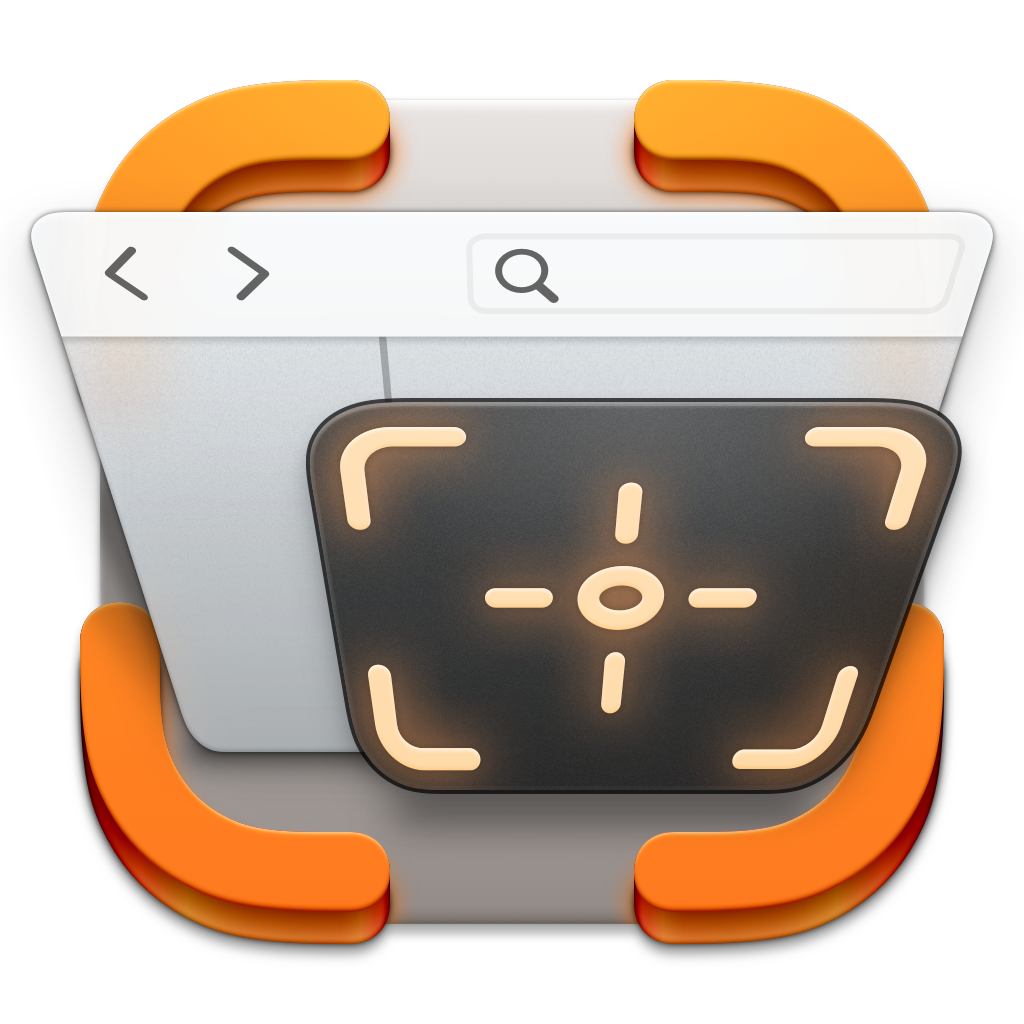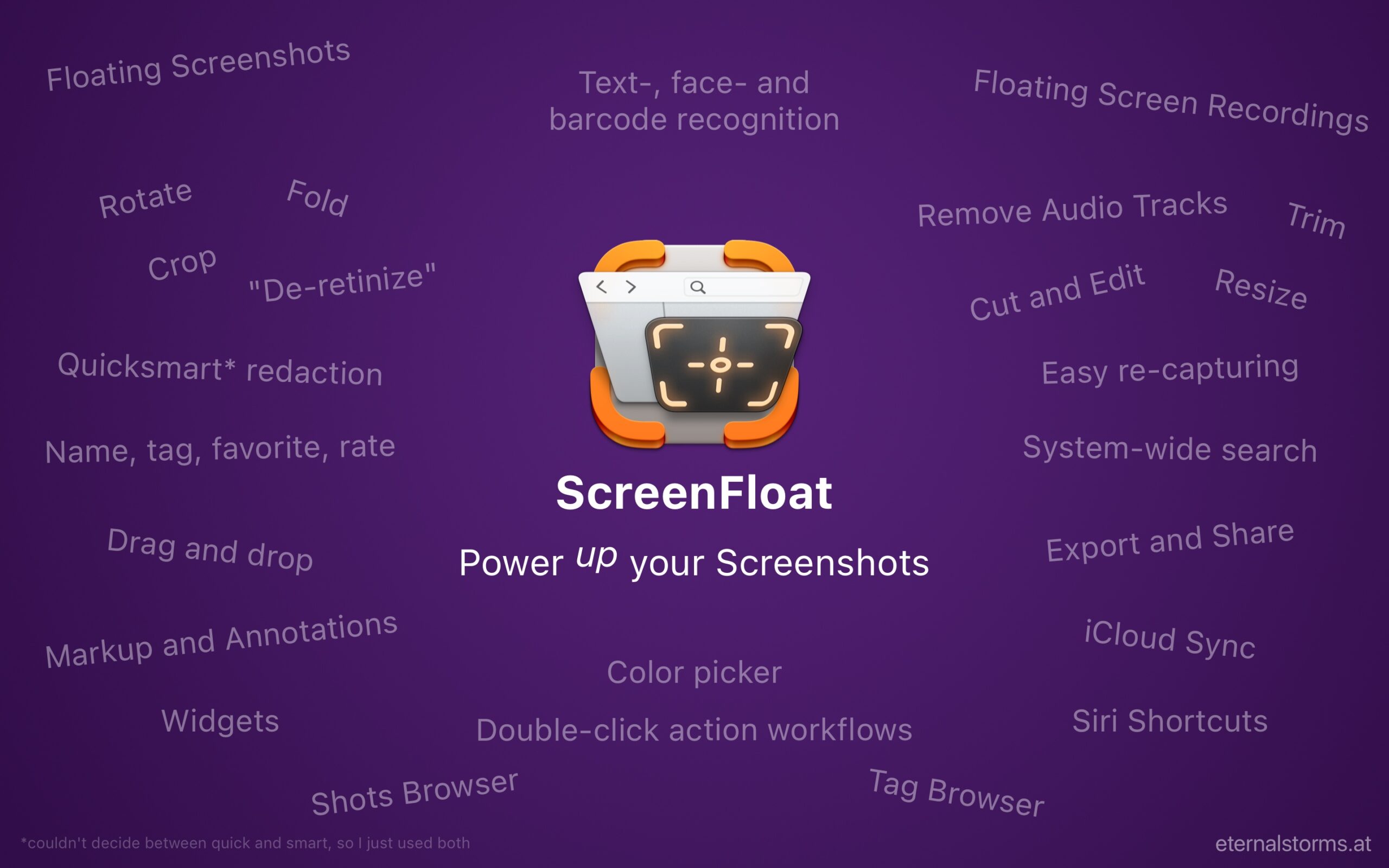Let’s take a tour through DeskMat and see how it can sweep things under the rug for you – virtually.
DeskMat covers the files on your Mac’s Desktop instantly with the click of a button (or automatically) –
for nicer streams, video conferencing, screen sharing, and distraction-free work!
Table of Contents
Cover your Desktop
DeskMat runs completely in the background.
By default, it shows a button on your screens’ Desktops that you can click to toggle the Desktop cover. But you can also move it to your menu bar, use a keyboard shortcut, or have it trigger automatically.
To reach DeskMat's Settings and other options, right-click the button, or double-click DeskMat in Finder when it's already running.
From the Desktop

DeskMat runs in the background and shows a button on the bottom of your screens’ Desktops.
Click it to cover your Desktop, then click it again to uncover it.
Right-click it (or the Desktop cover) to reach DeskMat’s Settings and other options.
From the Menu Bar

Alternatively, you can have the button in your menu bar instead.
Click it to cover your Desktop, then click it again to uncover it.
Right-click it (or the Desktop cover) to reach DeskMat’s Settings and other options.
By default, clicking DeskMat's button covers just that screen's Desktop, so if you have multiple screens, the other Desktops will not be affected.
You can change this in DeskMat's Settings, or hold down the option key ⌥ when clicking.
Via Keyboard Shortcut
Toggle the Desktop cover with the press of a shortcut on your keyboard.
Via Auto-Triggers
DeskMat can cover your Desktop automatically when specified apps are running, or come to the foreground. More on that below.
Using the keyboard shortcut or auto-triggers will always cover all your screens' Desktops.
Button Settings
You can have the button appear on all your screens’ Desktops, only on your main screen’s, in the menu bar, or nowhere at all.
If you place the button on your Desktop, you can change on which edge of your screen(s) the button should appear.
If you choose to not display a button at all, you can trigger DeskMat’s cover via the keyboard shortcut or via auto-triggers.
Auto-Triggers
DeskMat can automatically cover your Desktops when specific apps are running, or come to the foreground.
Focus Mode Support
DeskMat can automatically cover your Desktops when you activate specific Focus modes.
In System Settings > Focus, select the Focus where, when activated, DeskMat should cover your Desktops, and add the app as a Focus Filter. Select whether you’d like to just cover your main Desktop, or all of them (on all screens), and you’re set.
Now, when you activate the Focus, DeskMat will cover your Desktops in tandem.
Wallpaper Selection
Choose between your current wallpaper*, the macOS Default Wallpaper (whatever the current version of macOS defaults to – on macOS Sequoia 15, it’s the forest), a solid color, a custom image, or blurring the Desktop with different strengths and appearances.
If you use your current wallpaper, you can select between Static and Live:
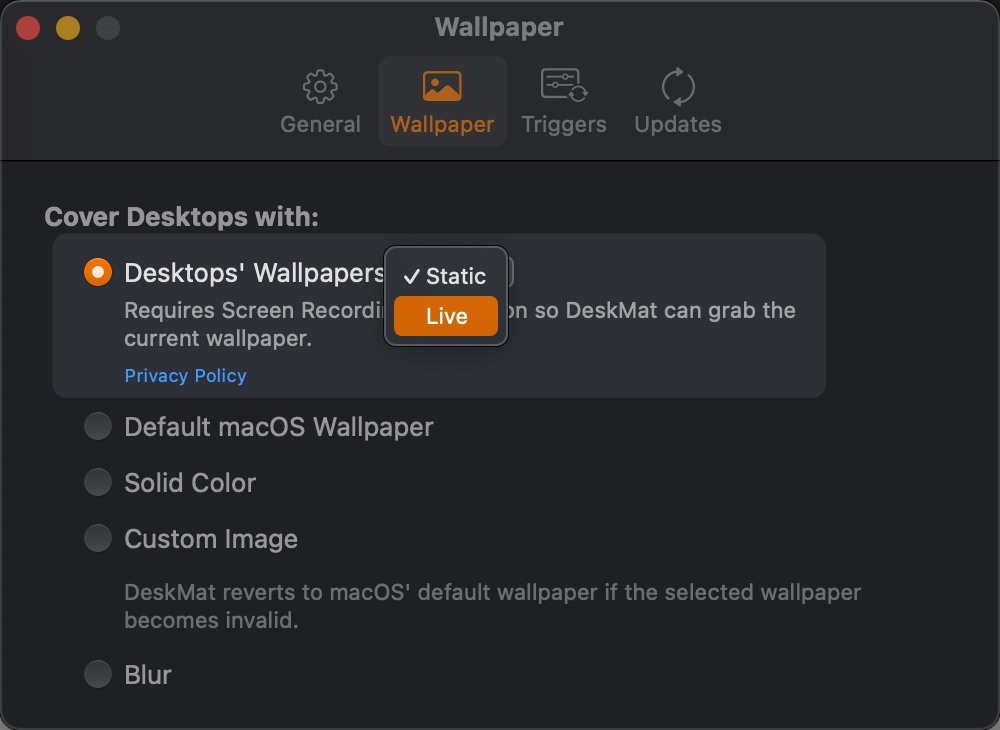
Static means that DeskMat will use your current wallpaper as-is the moment you activate DeskMat, which is great for when your wallpaper doesn’t change.
But if you have a dynamic wallpaper, or shuffle through them at an interval, you might want DeskMat to reflect that change, too. For this, select Live, which makes DeskMat “stream” your wallpaper as it changes. It uses a bit more of your Mac’s CPU, but is still very efficient, thanks to macOS’ capture APIs.
* To use your current wallpaper, DeskMat requires Screen Recording permissions. Although there is an API on macOS to get the current wallpaper, it is not reliable when it comes to dynamic wallpapers that change during the course of the day. So what DeskMat does, when you click its button to cover your Desktop, is to screenshot your wallpaper and use that as the cover, guaranteeing that it’s your actual wallpaper.
Reaching your Desktop
You might wonder: with my Desktop covered, how do I reach it?
Just right-click the cover, or DeskMat’s button, and select Open Desktop in Finder, and a new Finder window will open up, showing your Desktop’s contents.
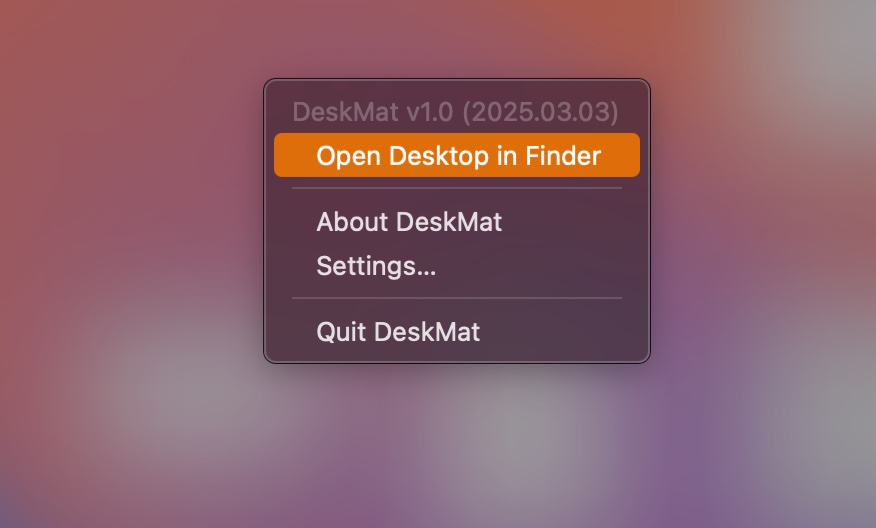
That’s a Wrap
And that’s about it. I hope you’ll find DeskMat useful!
If you have any feedback or questions, please don’t hesitate to write me!
Links
DeskMat Website + Trial + Direct Purchase
DeskMat Trial Download
DeskMat on the Mac App Store
Contact & Connect


